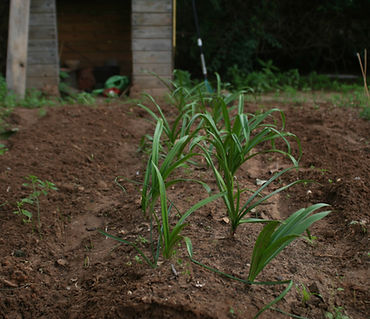
Ms. Brubaker's
3rd Grade
Email: brubaker.rebecca@mail.fcboe.org
In this room, we don't do EASY.
We make easy happen through HARD WORK & LEARNING!



Science
Science Tools
Science Tools to Know:
* Hand Lens * Ruler * Forceps
* Dropper * Microscope * Tape Measure
* Measuring Cup * Spring Scale * Balance Scale
* Thermometer


Rocks and Minerals
A mineral is a solid object found in nature that has never been alive.
Hardness is the measure of how difficult it is for a mineral to be scratched. Diamond is the hardest and talc is the softest.
A rock is a naturally formed solid made of grains of one or more minerals. There are 3 types of rocks.
Igneous rocks are rocks that were once melted and then cooled and hardened. Many came from volcanoes.
Sedimentary rocks are rocks made when material settle into layers and get squeezed until they harden into rock. This is the most common type of rock.
Metamorphic rocks are rocks that have been changed by heat or pressure deep inside the Earth.
Weathering is the the breaking down of the rocks.
Erosion is the movement of weathered rock.
Soil
Soil
There are three main layers of soil topsoil, subsoil and bedrock.
Topsoil is made from humus, sand and clay, it is high in nutrients which makes it good for plants.
Subsoil is mostly made up of clay and has very few nutrients.
Bedrock is the rock layer beneath the soil.
Soil is categorized into three groups by size: sand, silt, and clay.
Sand is made up of tiny fragments of rock, it does not hold water well and has few nutrients. Sand particles are the biggest.
Silt is sand and soil that has been washed by water and collects at the bottom of rivers and streams. Silt particles are smaller than sand but bigger than clay.
Clay is made up of tiny particles of rock and decayed plant material. It holds water well and is often sticky. Clay has the smallest particles.
There is also humus and loam.
Humus is found in the topsoil layer. Humus is very rich in nutrients because it is comprised of plants and animals that have died and decayed (broken down, rotted away).
Loam is a mixture of humus, sand, and clay. Loam is the best soil for growing most plants.


Fossils
A fossil is a trace or the hardened remains of a plant or animal that lived long ago.
Trace fossils are the marks left behind by animals that lived a long time ago. Dinosaur footprints are an example of a trace fossil.
A mold fossil is the outline or shape of a plant or animal. Think of a jello mold.
A cast fossil forms in the mold fossil, it is the 3D shape of the plant or animal. Think of the jello you pour into the jello mold.
How Fossils are Formed
1. First an animal dies and the body decomposes (rots away) leaving the bones.
2. The bones of the animal get buried under lots of layers of soil/sediment.
3. Over a very long time, thousands of years, the bones are replaced by minerals and are turned into rocks.
4. Weathering and erosion bring the fossils back to the Earths surface and people find them.
Heat Energy
Heat is the movement of thermal energy from warmer to cooler objects.
Thermal energy is the form of energy that moves particles in matter.
A thermometer is a tool used to measure temperature.
Temperature is the measure of how hot or cold something is.
Celsius and Fahrenheit are two scales we use to measure temperature. We use Celsius in the USA.
An insulator is any material that does not allow heat to pass through it easily, such as wood
A conductor is any materisl that does allow heat to pass through it easily, such as metal.


Habitats of Georgia
Pollution and Conservation


